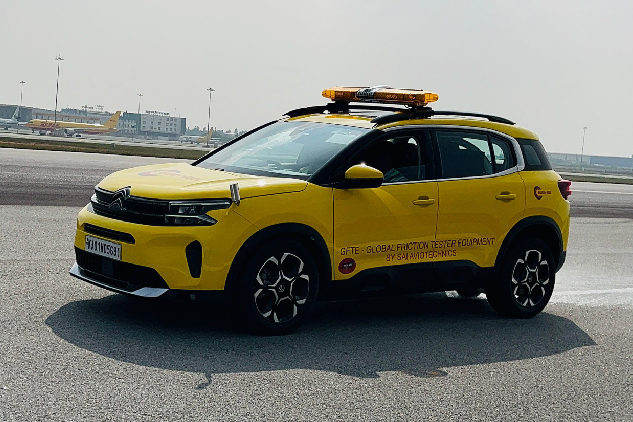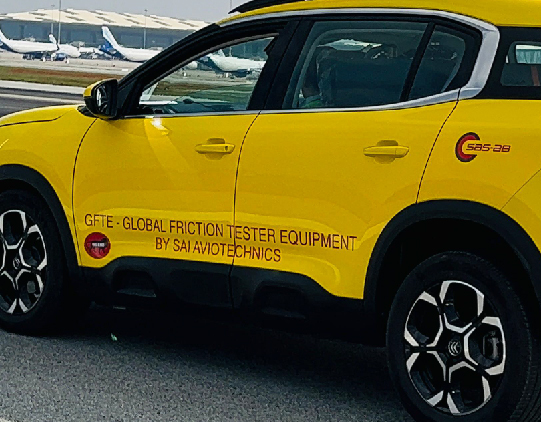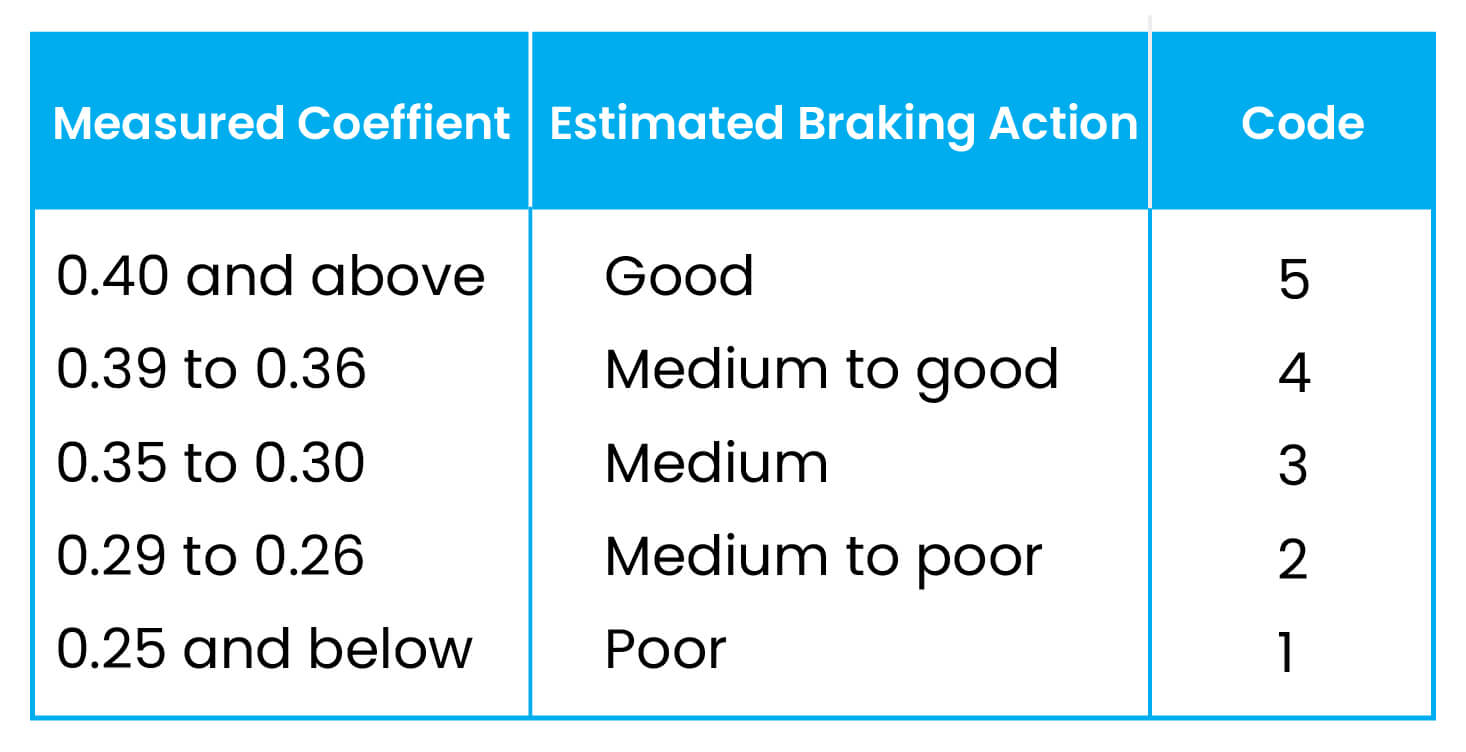
Runway surface friction is directly applicable to the braking action which will be available to an aircraft decelerating after touchdown, or after a decision to reject a take off.
Anti-skid braking systems are fitted to most multi-crew aircraft; these prevent wheel locking and can allow more aggressive brake input for wheels which are rotating on wet or otherwise slippery runways, without inducing dynamic or viscous aquaplaning. Hard surface runways may be constructed using either concrete or rolled asphalt but the principles which affect their operational characteristics in respect of aircraft braking response are the same.

Devices which detect surface friction are termed Continuous Friction Measuring Equipment (CFME). Their primary application is the determination of reference friction levels on dry and artificially wetted surfaces. The latter requirement needs a controllable self-wetting capability which can deliver a 1mm water depth.

These reference friction measurements allow airport operators to ensure that the range of surface frictions encountered operationally on un-contaminated runways remain acceptable most of the time. The only operational use of CFME which is currently possible is in the measurement of actual friction on runways. These readings are then passed to ATC for transmission to flight crew as either the averaged readings by runway section, or more often a braking action categories; the latter usually follow a scale from ‘Good’ through four intermediate categories to ‘Poor’.
ICAO Annex 14 requires that information that a runway, or portion thereof, is slippery wet, shall be made available. The ‘slippery wet’ condition is normally established when the friction level of the paved runway, or portion thereof, is less than the minimum friction level specified by the State. This requires aerodrome operators to evaluate, at regular intervals, the friction characteristics of the runway(s) to ensure that among other things, the friction level is not less than the minimum friction level specified by the State. While ICAO requires that runway surface friction characteristics for maintenance purposes must be periodically measured with a continuous friction measuring device using self-wetting features, the assessment should not be based solely on them. It should be complemented with observations by aerodrome maintenance personnel, repeated reports by pilots and aircraft operators based on flight crew experience, or through analysis of aeroplane stopping performance that indicates a substandard surface.
ICAO is promoting a more holistic approach to assess runway surface conditions and guidance is provided in ICAO Doc 9981 ‘PANS-Aerodromes’. This includes different methods and techniques to monitor runway surface and more specifically rubber build-up, geometry change and polishing. Friction measurements using controlled applied water depth are used assess the level of rubber build-up and the polishing of runway surface, while measurements on natural wet conditions, which might reveal if portions of a runway are susceptible to ponding and/or to fall below State set criteria.
Friction measuring devices play an important role in monitoring the trend of surface friction characteristics, however runway surface assessments should not be based only on the data provided by those devices, but should be supplemented by observations, pilots’ reports or through analysis of aeroplane stopping performance data.
Aircraft braking coefficient is dependent upon the surface friction between the tyres on the aircraft wheels and the pavement surface. Less friction means less aircraft braking coefficient and less aircraft braking response.
Friction is expressed as the coefficient of friction; this is the ratio of the friction force (F) between two surfaces in contact and the normal force (N) which exists between the object resting on the surface and the surface i.e. F/N. This ratio is particularly, but not exclusively dependent, upon:
Copyright © 2023 Sai AvioTechnics. All rights reserved.